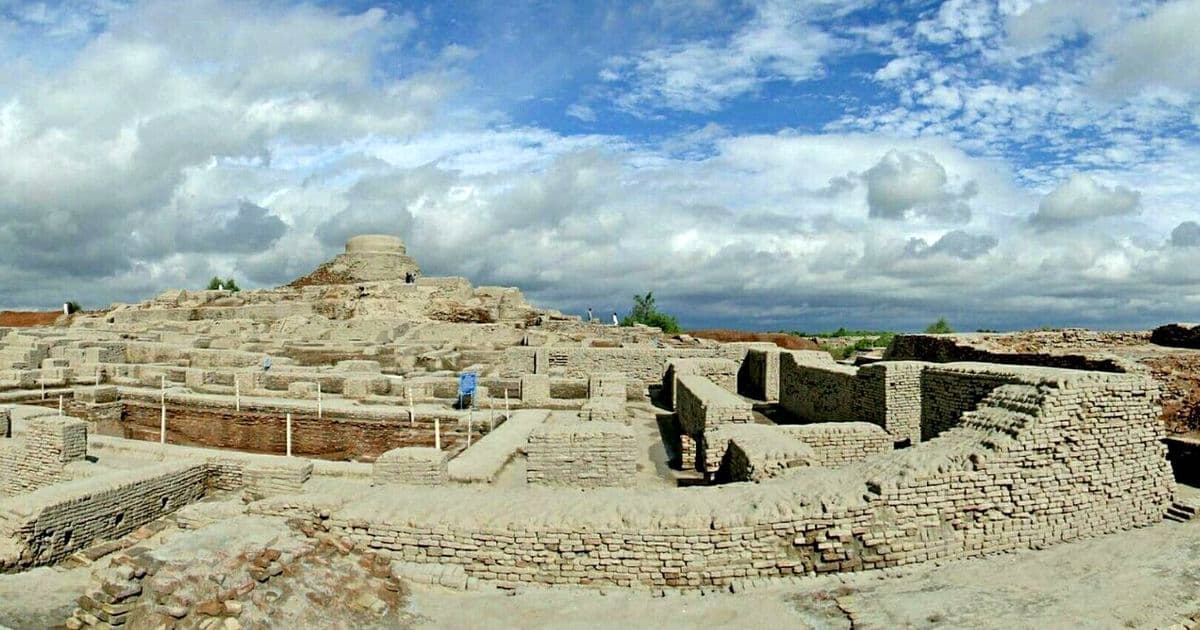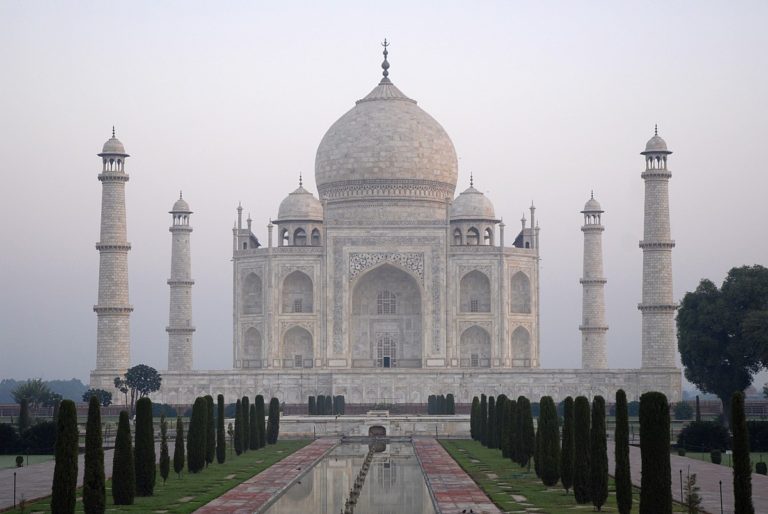
DIVINE NATURE GAVE THE FIELD, HUMAN ART BUILT THE CITIES
says a roman scholar…….
But the world today is very suspicion of the sustainability of this human art of urban areas and this is due to the negative effects of urbanisation like congestion, environmental degradation etc. This dilemma regarding the sustainability of the contemporary urban civilisation has its origin in around 1900-1500 BC when the world’s first well developed, well planned urban civilisation at the Indus region declined all of a sudden. This sowed the seeds for present suspicion as the decline of the mentioned Indus valley civilization has no precise scientific evidence and it still remains a mystery.
The civilisation developed at the Indus, often called as Harappan civilisation or urban culture of bronze age, is a first well developed mature urban civilisation in India. The mature phase of the civilisation is between 2500-1900BC and characterised by features like citadel, lower town, brick houses, great bath, seals and sealings, agriculture, domestication of animals, technology, crafts, religious practices, undeciphered Harappan script, weights and measures, stone work, metal images etc. Harappan sites were mainly found in North west India, Gujarat, Rajasthan, Haryana.
Let’s analyse why it is considered a mystery, what the mystery behind this and why it is important to solve the mystery.
MYSTERY OF DIVERSE THEORIES:
When anything is said to be a mystery, in most cases it means that it lacks evidences or theories. So, is this mystery of decline of the Indus valley civilization is as simple as that? Let’s see.
By the 19th century the two important cities of Harappa and Mohenjo-Daro disappeared suddenly, but the Harappan culture at other sites faded out gradually and it lingered till 1500 BC. This decline is supported by the fact that the Mesopotamian literature stop referring to Meluha (ancient name given to India region) since 1800 BC. Even this chronology is tentative.
And the cause of this cultural collapse is suggested by many scholars. These suggestions have a range of economic, political and environmental theories but no linkage is seen between them which further reinforced the mystery around the decline. Some scholars suggest that river dries up. Some suggests of deforestation, floods, climate change and so on. But all these theories hold only for certain settlement and so not explain the cultural collapse of the entire civilization. Thus, this mystery is not so simple as the general notion of a mystery.
Thus, starting from the date of decline to its causes, everything has been mysterious. Now let’s analyze some of the more plausible theories or researches by scientists regarding the decline of the India valley civilization.
THEORIES OF SUDDEN DECLINE:
Some important researches regarding sudden decline of the civilization are Raikes’s hypothesis and the shifting away and drying up of the rivers.
RAIKES’s HYPOTHESIS OF CATASTROPHIC FLOOD:
Many scholars seek the observation of deposition of silt in the Mohenjo-Daro for about 80 feet as the evidence of flooding and Raikes expanded this theory and came with a hypothesis.
Hydrologist Raikes’s made a framed a hypothesis by citing catastrophic flooding as a cause for the decline of Mohenjo-Daro. He argued that such flooding could drown buildings 30 feet above the ground level of the settlement and says that the flooding is catastrophic and not normal. He believed that the Harrapan civilisation declined due to the prolonged submergence of the of the cities located on the bank of the river Indus. He also says that geomorphologically speaking the region of Indus is a disturbed seismic zone. Earthquakes would have raised the level of the flood plain and this plain would have blocked the flow of river into the sea. This blocking led to the pondering of water and hence a lake was formed in the area where the city has once flourished. And thus, the rising water level of the river swallowed the cities like Mohenjo-Daro.
It has also been said the Harrapan cities of Sutkagedor and Sutka-koh which were once the sea ports now located far away from the sea coast. This is due to the upliftment of the land on the sea coast possibly caused by violent tectonic uplifts.
What a convincing hypothesis given by R.L. Raikes! But this hypothesis remains a hypothesis and it never satisfied the scholars, It drew heavy criticisms by many scholars who don’t consider the catastrophic flooding as a reason for the decline of Indus Valley Civilization. H.T. Lambrick criticized this idea of tectonic upliftment and catastrophic flooding on the grounds as follows-
- Large volume of Indus water could have easily breached the ground raised by earthquake. He sought the example of 1819 Sindh flood which breached the ground raised by the earthquake.
- The deposition of silt may not be necessarily due to Indus river flooding.
- Also, this theory failed to explain for sites outside Indus.
Though this theory throws gives some evidences, it is specific to the cities around Indus river and hence this theory fails in solving the mystery around decline of the civilisation.
SHIFTING AWAY AND DRYING UP OF RIVERS:
Lambrick explained the decline of the Mohenjo-Daro river in terms of sifting of river Indus in its course about 30 miles away from Mohenjo-Daro. The Indus river is highly unstable and constantly shifting its course and he says this happens many times in the history. Thus the people of the city deserted the area as it was impossible to practice agriculture without water.
Whether Lambrick, who crticised Raikes, was able to explain the decline through his shifting of river theory?
Its again a NO. This theory explains merely the desertion of a single city Mohenjo-Daro.
And a big question regarding this theory is that “If the people of Mohenjo-Daro was familiar with such a shift, why could not they themselves shift and establish a new city like Mohenjo-Daro? Thus, it is obvious that there are some other factors at work.
It is also said the in the Harappan Zone, Yamuna and Sutlej moved away from the Saraswathi River in 1700 BC. But since the existence of Saraswathi river itself has no concrete evidence this theory is also not accepted completely.
Drying up of the Ghaggar-Hakra river due to arid conditions and subsequent loss in water supply also seen by some scholars as a cause of the decline but this theory does not dated the onset of arid conditions and drying of river properly and also has many flaws.
LINKING THE DECLINE TO CLIMATE CHANGE:
The earlier scientists mostly focused on the causes of sudden decline but recent researches have been focusing on linking the decline with the environmental factors and climatic factors and among them the most important is the research around the role of monsoon in the decline of Indus Valley Civilisation.
The research around the climate change for the decline of civilisation is somewhat dynamic because within a short period of time, different researches shows different views.
RESEARCH AROUND MONSOON:
This theory is very significant because geographically still there is no single theory to explain the monsoon itself. So, linking this complex phenomenon with the decline of the Indus valley civilisation shows the eagerness of the scientists in solving the mystery and at the same time this makes the research more complex
One set of scientists from the U.S., U.K., Pakistan, India and Romania In 2012 has argued that long-term changes in monsoon rainfall altered river flow, creating conditions that initially helped them in thriving but later it was the one that lead to the decline. Comparing with the current rainfall 10000 years back there is a evidence of greater monsoon rainfall. But around 5000 years ago the monsoon sifts eastward thus reducing the rainfall in the Northwestern part of the subcontinent, where the important Harappan sites are present. But later after some 500 years this decreased rainfall leads to increase in arid climate which leads to deterioration of agriculture which in turn damages the cities that have linked with these urban areas. Thus the people migrated from the Harapan sites thus constituting to its decline
A CONTRADICTING RESEARCH:
After some years researchers from UK in 2017 said that the people of Indus Valley civilisation used a variety of subsistence practices to cope with diverse environments. This contradicts the earlier claims that climate change phenomenon such as monsoon has led to the decline of the Indus Valley civilisations.
Thus, the research around climate change too not able to explain the decline of the civilisation and the most important is that the changing research conclusions reinforces the mysterious nature of the issue.
OTHER THEORIES IN A NUTSHELL:
SOIL EXHAUSTION:
The exhaustion of soil may have diminished cereal production and starved the urban people. But tis theory too lacked evidence because the enduring fertility of the soil in the Indian subcontinent does not support this theory.
COLLAPSE OF CRAFTS AND COMMERCE:
It appears that crafts and commerce collapsed because of the sudden end of the long-distance land and sea trade wit Mesopotamia. This trade in luxurious articles, including lapis lazuli, beads, etc., mainly passed through Elam, which was located on the eastern border of Mesopotamia and covered a substantial part of Iran. The emergence of Elam as a powerful state around 2000 BC interrupted the supply of Harappan goods to Mesopotamia and the Mesopotamian imports, including tin, to the Harappan settlements. The break in the exports to Mesopotamia deprived the lives of craftsmen.
POLITICAL FACTORS:
Once the aristocracy failed to exercise control over the crafts and cultivation in the cities the Harrapan culture collapsed. But these theories were not considered sufficient by the researchers in explaining the decline of the urban civilisation.
SIGNIFICANCE OF SOLVING THE MYSTERY:
As described earlier the contemporary scientists were keen on analysing the sustainability of the present cities. The urban culture of the Indus valley civilisation is the prototype of the present cities. This can be easily seen in the streets of the urban areas where the houses are built in more or less grid like pattern, which is the important and the central characteristic of the Indus Valley civilisation. Thus, though the context of the ancient cities and the contemporary cities are totally different the basic concept of the decline of the ancient cities can guide the scientific community in their analysis of the sustainability of the existing urban areas.
Thus, the decline of Indus Valley civilizations one of the earliest historical mysteries of the world, at the same time yet to be solved mystery. Till now as far as the researches were concerned, it makes one to feel that “Something is better than Nothing” as these evidences or theories, though not completely acceptable will guide the future scientific community in better analysing the issue and providing a universally acceptable solution to the mystery.
By A SIVA SHANKAR


